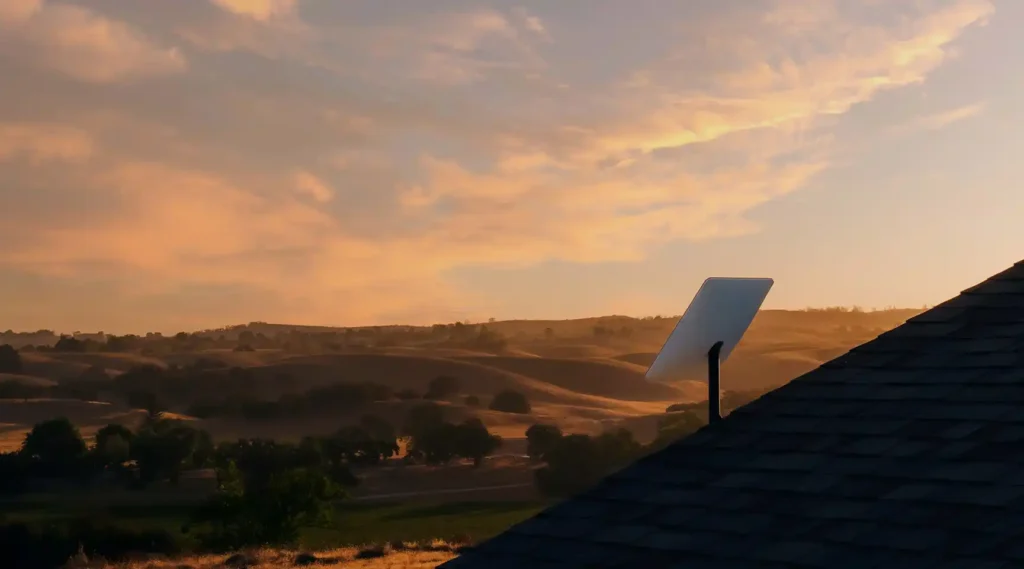Are you aware that Elon Musk’s groundbreaking internet venture, Starlink, currently boasts an impressive fleet of over 4,200 satellites orbiting above us? This number alone surpasses half of the total count of active satellites in existence. While the sheer magnitude of this satellite network raises concerns among the scientific community regarding its impact on night sky visibility and other related matters, Elon Musk remains steadfast in his belief that Starlink represents the future of internet connectivity.
Now, let’s delve into the details. What exactly is Starlink, how does it operate, is it accessible in India, and why does it generate controversy? Today, we will provide answers to these intriguing questions.

Contents
What is Starlink?
Starlink is a satellite internet service developed by SpaceX, the company founded by Elon Musk. It is designed to provide high-speed, low-latency internet access to anywhere on the planet, including rural and remote areas that are currently underserved by traditional internet providers.
Starlink uses a constellation of thousands of satellites that orbit the Earth at a low altitude of about 550 kilometers. This allows for much faster speeds and lower latency than traditional satellite internet services, which use satellites that orbit the Earth at much higher altitudes.
Starlink is still under development, but it has the potential to revolutionize the way we access the internet. It could provide reliable internet access to people who currently don’t have it, and it could also help to improve the quality of internet access in areas that are currently underserved.
In this blog post, we will take a closer look at Starlink and what you need to know about it. We will discuss how it works, how much it costs, and where it is available. We will also discuss the pros and cons of Starlink, and whether or not it is right for you.
How does Starlink work?
Starlink works by using a constellation of thousands of satellites that orbit the Earth at a low altitude of about 550 kilometers. This allows for much faster speeds and lower latency than traditional satellite internet services, which use satellites that orbit the Earth at much higher altitudes.
To use Starlink, you need to purchase a Starlink kit, which includes a satellite dish, a router, and a power supply. The satellite dish is mounted on your roof and it connects to the satellites in orbit. The router then distributes the internet signal to your devices.
Starlink uses a variety of technologies to provide high-speed, low-latency internet access. These technologies include:
- Laser communication: Starlink satellites communicate with each other using laser beams. This allows for much faster data transfer speeds than traditional satellite internet services, which use radio signals.
- Automatic beam steering: Starlink satellites can automatically steer their beams to keep them pointed at the user’s dish. This ensures that the user always has a strong signal.
- Adaptive modulation: Starlink satellites can adjust the modulation of their signals to match the conditions of the user’s connection. This ensures that the user always gets the best possible speeds.
Starlink is still under development, but it has the potential to revolutionize the way we access the internet. It could provide reliable internet access to people who currently don’t have it, and it could also help to improve the quality of internet access in areas that are currently underserved.
How Starlink aims to provide global internet coverage?
Starlink aims to provide global internet coverage by launching a constellation of thousands of satellites into low Earth orbit (LEO). LEO satellites orbit the Earth at a much lower altitude than traditional geostationary satellites, which means that they have a much lower latency (the time it takes for a signal to travel from the user to the satellite and back). This makes Starlink ideal for providing high-speed internet access to rural and remote areas that are currently underserved by traditional internet providers.
As of March 2023, SpaceX has launched over 2,200 Starlink satellites and plans to launch up to 42,000 satellites in total. The company expects to have global coverage by mid-2023.
Here are some of the challenges that Starlink faces in providing global internet coverage:
- Space debris: The Earth’s orbit is already cluttered with space debris, and the addition of thousands of Starlink satellites could make the problem worse. SpaceX is working on ways to mitigate the risk of space debris collisions, but it is a challenge that will need to be addressed.
- Weather: Starlink’s performance can be affected by weather conditions, such as rain and snow. SpaceX is working on ways to improve the performance of Starlink in bad weather, but it is a challenge that will need to be addressed.
- Regulation: Starlink will need to obtain regulatory approval from governments around the world before it can launch satellites in their airspace. This is a complex and time-consuming process, and it is a challenge that Starlink will need to overcome.
Despite these challenges, Starlink has the potential to revolutionize the way we access the internet. It could provide high-speed, low-latency internet access to people in rural and remote areas who currently don’t have it, and it could also help to improve the quality of internet access in areas that are currently underserved.
Benefits of Starlink
Here are some of the benefits of Starlink:
- High speeds: Starlink can provide download speeds of up to 100 Mbps and upload speeds of up to 20 Mbps. This is much faster than traditional satellite internet services.
- Low latency: Starlink has a latency of about 20 milliseconds. This is comparable to the latency of cable and fiber optic internet services.
- Global coverage: Starlink is designed to provide global coverage. This means that you can use it anywhere on the planet, including rural and remote areas.
- Easy to set up: The Starlink kit is easy to set up. You can do it yourself in about an hour.
- Unlimited data: Starlink offers unlimited data, so you don’t have to worry about overage charges.
- Reliable: Starlink is designed to be reliable, even in areas with bad weather.
- Scalable: Starlink can be scaled up to meet the needs of more users.
Current Status and Future Plans of Starlink
As of March 8, 2023, SpaceX has launched over 2,200 Starlink satellites and plans to launch up to 42,000 satellites in total. The company expects to have global coverage by mid-2023.
Starlink is currently available in select countries and regions, including the United States, Canada, the United Kingdom, Germany, and Australia. The company is working to expand availability to more countries and regions in the near future.
Starlink’s future plans include:
- Expanding availability to more countries and regions.
- Reducing the cost of the kit and monthly subscription.
- Improving the performance of Starlink in bad weather.
- Mitigating the risk of space debris collisions.
- Obtaining regulatory approval from governments around the world.
Starlink has the potential to revolutionize the way we access the internet. It could provide high-speed, low-latency internet access to people in rural and remote areas who currently don’t have it, and it could also help to improve the quality of internet access in areas that are currently underserved.
Here are some of the challenges that Starlink faces in the future:
- Competition: Starlink is not the only company developing a satellite internet constellation. Other companies, such as Amazon and OneWeb, are also working on similar projects. This could lead to increased competition and lower prices for consumers.
- Regulation: Starlink will need to obtain regulatory approval from governments around the world before it can launch satellites in their airspace. This is a complex and time-consuming process, and it could delay the expansion of Starlink’s service.
- Environmental impact: The launch and operation of Starlink satellites could have a negative impact on the environment. SpaceX is working to mitigate the environmental impact of Starlink, but it is a challenge that will need to be addressed.
Despite these challenges, Starlink has the potential to be a major force in the internet access market. It is a promising new technology that has the potential to provide high-speed, low-latency internet access to people all over the world.
Is Starlink available in India?
Starlink, the revolutionary satellite internet service, is on the verge of expanding its operations to India. In its pursuit to provide internet access to remote areas, Starlink has taken the initiative to reach out to the Telecom Regulatory Authority of India (TRAI) for the necessary approvals to utilize satellite technology. While specific details such as the launch date and pricing plans are yet to be disclosed, Starlink’s efforts to bring connectivity to underserved regions in India are underway.
However, Starlink, the company owned by Elon Musk, is not the sole contender in the competition to offer satellite internet services in India. Telecom powerhouses Airtel and Jio are also preparing to enter this burgeoning market. Airtel, with its support for OneWeb, and Jio, through its satellite division called Jio Space Technology, have both submitted applications for the GMPCS (Global Mobile Personal Communication by Satellite) license. This license is a mandatory requirement for providing communication services based on satellite technology.
Must Read
Discover the Power of WhatsApp Instant Video Message Feature
Conclusion
In conclusion, Starlink is a promising new technology that has the potential to revolutionize the way we access the internet. It is still under development, but it is already providing high-speed, low-latency internet access to people in rural and remote areas. As the service continues to expand, it is likely to become more affordable and available to a wider range of people.
If you are looking for high-speed internet, Starlink is a good option to consider. However, it is important to be aware of the limitations of the service, such as the high cost and limited availability.
Here are some of the key points to remember about Starlink:
- Starlink is a satellite internet service developed by SpaceX.
- Starlink uses a constellation of thousands of satellites to provide high-speed, low-latency internet access.
- Starlink is still under development, but it is already available in select countries and regions.
- Starlink is a promising new technology that has the potential to revolutionize the way we access the internet.
If you are interested in learning more about Starlink, you can visit the company’s website: https://www.starlink.com/.



